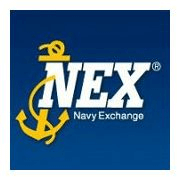Read Mini Case Studies

Business Situation
Navy Exchanges are part of a retail store chain owned and operated by the United States Navy under the Navy Exchange Service Command. The organization also known as the NEXCOM Enterprise has its worldwide headquarters in Virginia Beach, Virginia. Its mission is to provide authorized customers with quality goods and services at a savings as well as supporting Navy quality of life programs for active duty military, retirees, reservists, and their families.
Members of the military proudly refer to each of the 300+ stores strategically located around the world as “NEX.” The NEXCOM Enterprise which employs approximately 14,000 people and has an annual revenue in the billions is always expanding its operations along with maintaining what already exists. Inside NEXCOM is a Project Portfolio Management Office (PPMO) that is charged with managing hundreds of concurrent projects each year. The projects largely cover the management of new facilities and construction, maintenance of existing store infrastructures, and many information technology initiatives supporting the former.
Client’s Challenge
Leverage PPM technology to separately manage CIP and IT projects with stringent security
The PPMO at NEXCOM was seeking a technology solution for managing all its projects centrally so there would be greater visibility and transparency of the entire enterprise. Some of the challenges faced by the organization included how to do this securely given the stringent requirements of protecting data belonging to the United States military along with how to properly segregate the facility project types from those belonging to information technology. The internal management structure within NEXCOM had a line of demarcation between both project types, and they wanted any prospective technology to follow suit.
Other challenges included capturing the hundreds of pieces of information that were used to manage each project. Moreover, NEXCOM had a very intricate workflow for when each of these information components needed to be populated in the system, as a project manager worked through a complex initiative under the umbrella of the PPMO. Adding to the challenges of pulling together an all-encompassing technology solution was a prospective data integration with a NEXCOM third-party line of business: Lawson ERP for accounting and financial management. Finally, NEXCOM wanted to have a series of legacy reports duplicated and automated by leveraging all the data that was to be captured in the solution.
The Solution
Build out two separate tenants of PPM on premise with financial application integration
After a competitive bidding cycle, EPM Solutions was chosen to provide NEXCOM with a technology solution that would address all the major challenges. Microsoft Project Portfolio Management (PPM) was selected as the premier tool to deliver a fully functioning enterprise project management system. Because of the stringent security requirements, Microsoft Project Server was the natural choice for providing a secure solution to be managed on premise by NEXCOM’s administrators.
A decision had also been made to build out two entirely separate tenants of Microsoft Project Server. Each one would be responsible for servicing the two major divisions: Facilities and Information Technology (IT). NEXCOM felt it would be more appropriate to move forward with two systems because the project types had such differing requirements. Also, consistent with their security policy, they did not want the data from the two divisions stored together or overlap in their use.
Other critical security concerns were addressed by setting up a six-server farm behind NEXCOM’s firewall that provided for redundant database, application, and web servers. This was in conjunction with the robust security features provided by Microsoft as part of its overall PPM solution.
During the engagement, EPM Solutions configured hundreds of customized fields to capture every single piece of data required to manage a single project. Many of these fields were also “workflow controlled,” meaning they had specific requirements for when and who may populate a value. This was to make sure all necessary data would be captured by authorized users at the appropriate juncture in the project life cycle workflow. Some project types were designated either major or minor, which determined how much information would be required to execute.
Financial and accounting data from Lawson ERP was fully integrated into the final solution which allowed for the automated delivery of all the legacy reports that NEXCOM had been previously using. Individual reports and dashboards were provided on demand for senior level executives and the PMO.
